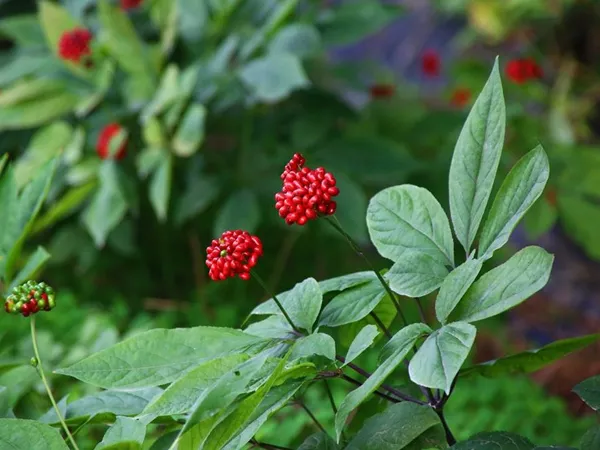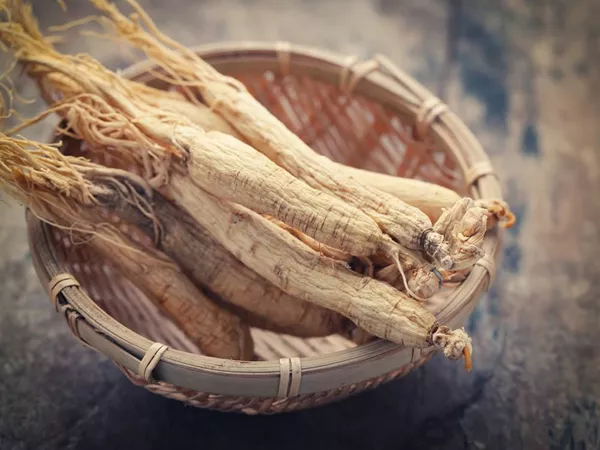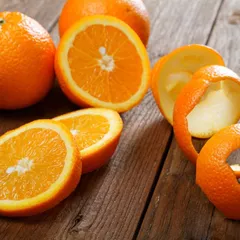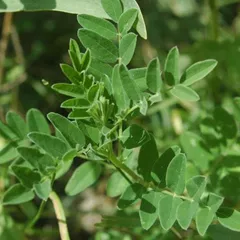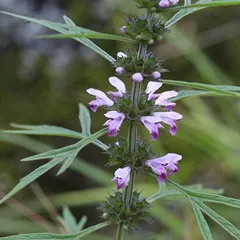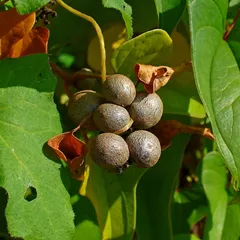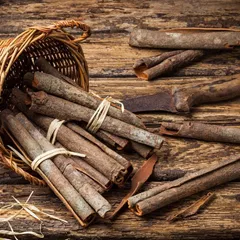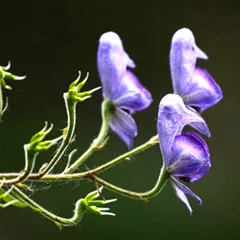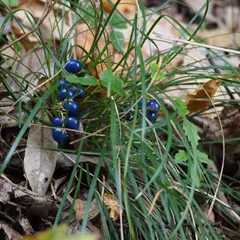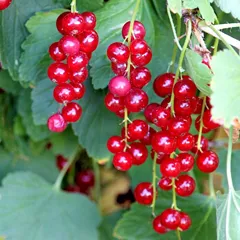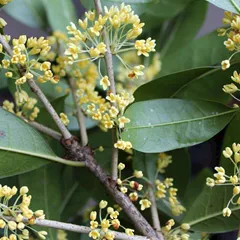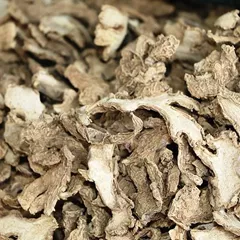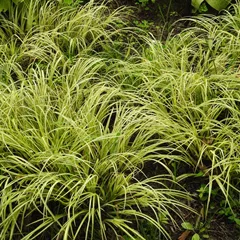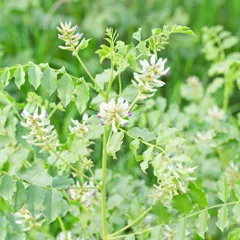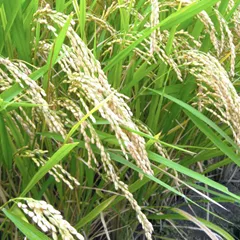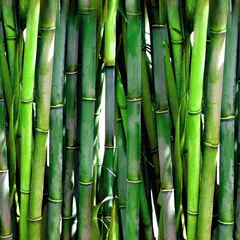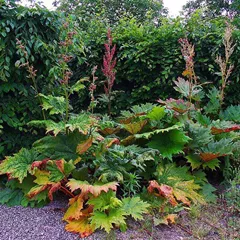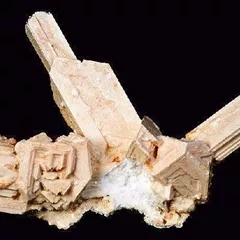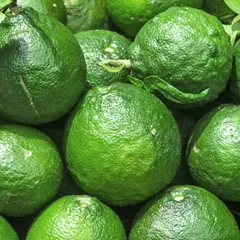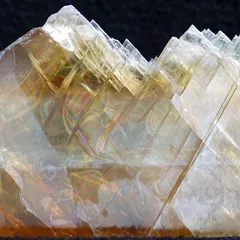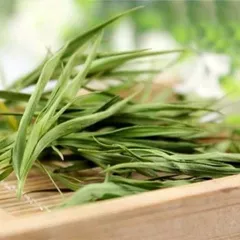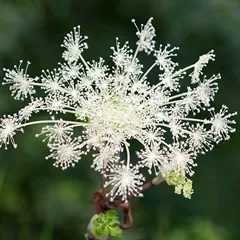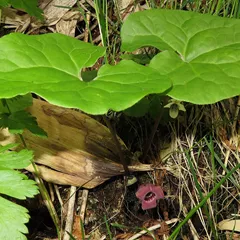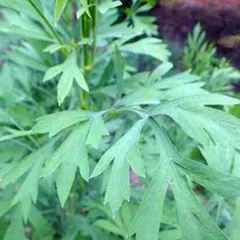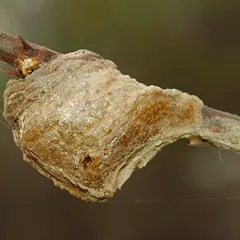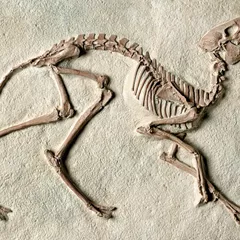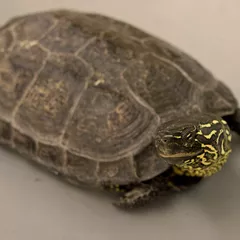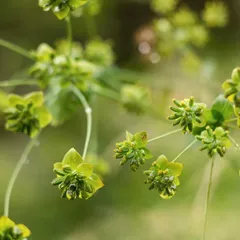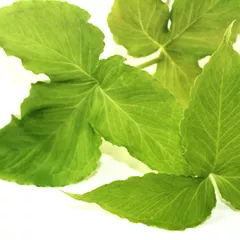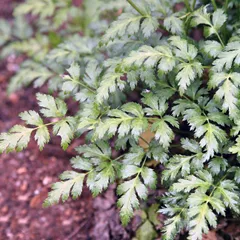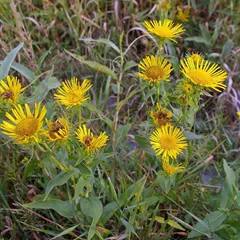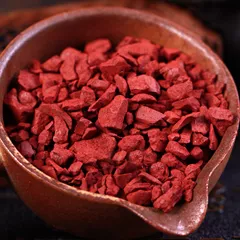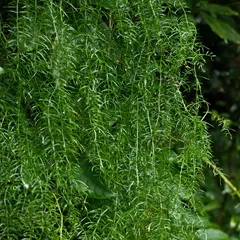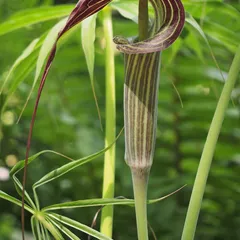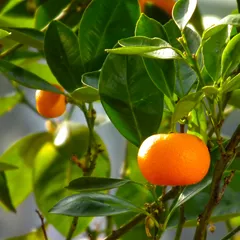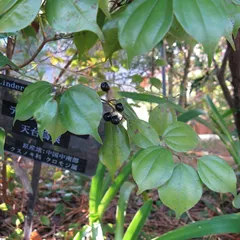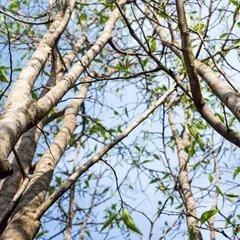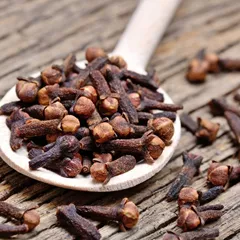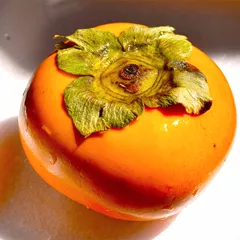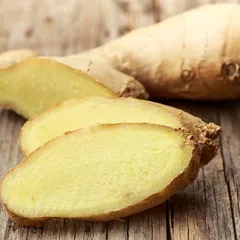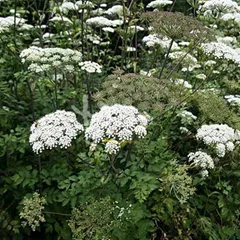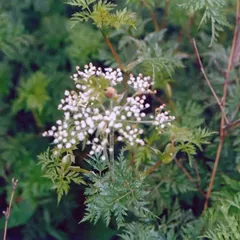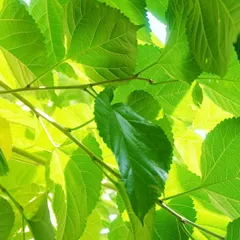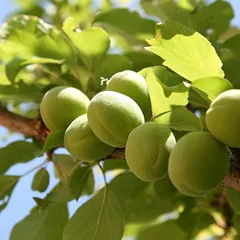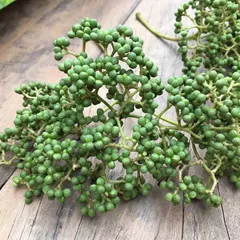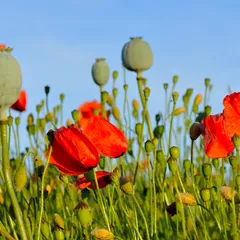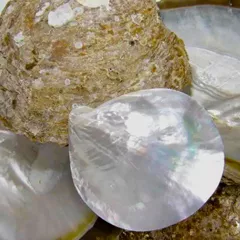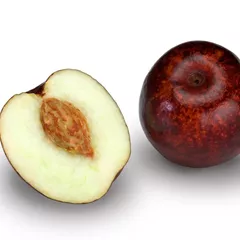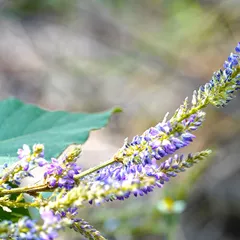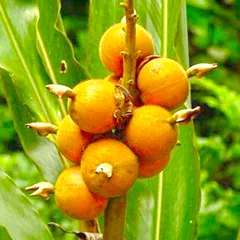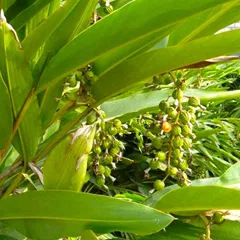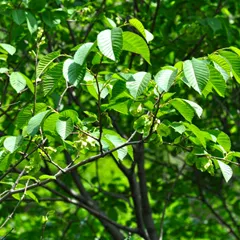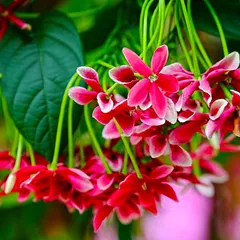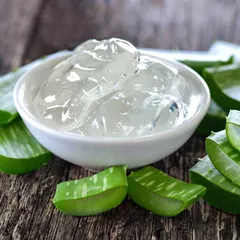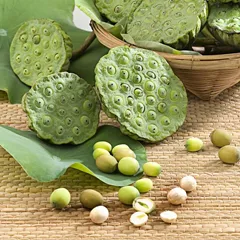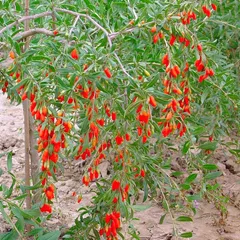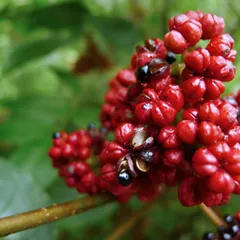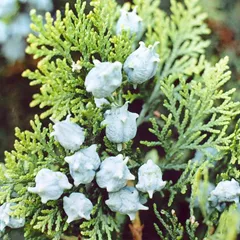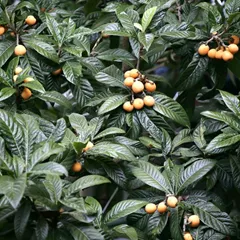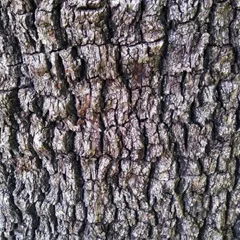Use of Ren Shen (ginseng) in TCM
Please note that you should never self-prescribe TCM ingredients. A TCM ingredient is almost never eaten on its own but as part of a formula containing several ingredients that act together. Please consult a professional TCM practitioner, they will be best able to guide you.
Preparation: For optimum potency, ginseng needs to be harvested when it is at least 4 years old but the best is a minimum of 7 years. After harvest remove the stems, leaves and small fibrous roots. There are several ways to prepare it. "Raw ginseng" is simply washed and dried. "Sugar ginseng" is picked with needle-sized holes and soaked in sugar water before it is dried. "Red ginseng" is steamed at high temperature for 2 hours before being dried.
Dosage: 3 - 9 grams
Main actions according to TCM*: Very strongly tonifies the Qi. Tonifies the Lungs and Spleen. Assists the body in the secretion of Fluids and stops thirst. Strengthens the Heart and calms the Shen (mind/spirit).
Primary conditions or symptoms for which Ren Shen may be prescribed by TCM doctors*: Dyspnea Loss of appetite Palpitations Insomnia Impotence Dehydration Restlessness Fatigue Weak pulse Wheezing
Contraindications*: This herb should not be used by those with Yin Deficiency with Heat signs or by those with Heat because of Excess. It should also not be used when there are acute pathogenic conditions. It should be avoided by those with very high blood pressure.
Common TCM formulas in which Ren Shen is used*
Si Jun Zi Tang
Source date: 1107 AD
Number of ingredients: 4 herbs
Formula key actions: Tonifies Qi. Strengthens the Spleen and Stomach.
Conditions targeted*: Chronic gastritisPeptic ulcers and others
Ren Shen is a king ingredient in Si Jun Zi Tang. Like the name indicates, it means it has more power than other ingredients in the formula.
In Si Jun Zi Tang, Ren Shen is a a powerful tonic for the Spleen Qi. Today however it is often substituted for Codonopsis root (Dang Shen), which plays a similar role and is significantly less expensive.
Liu Jun Zi Tang
Source date: 1107
Number of ingredients: 6 herbs
Formula key actions: Tonifies Qi. Strengthens the Spleen and Stomach. Clears Phlegm and mucus. Promotes appetite.
Conditions targeted*: AnorexiaPeptic ulcers and others
Ren Shen is a king ingredient in Liu Jun Zi Tang. Like the name indicates, it means it has more power than other ingredients in the formula.
In Liu Jun Zi Tang, Ren Shen is a a powerful tonic for the Spleen Qi. Today however it is often substituted for Codonopsis root (Dang Shen), which plays a similar role and is significantly less expensive.
Gui Pi Tang
Source date: 1529 AD
Number of ingredients: 12 herbs
Formula key actions: Tonifies and nourish Qi and Blood. Tonifies Heart and Spleen.
Conditions targeted*: Nervous exhaustionMyasthenia gravis and others
Ren Shen is a king ingredient in Gui Pi Tang. Like the name indicates, it means it has more power than other ingredients in the formula.
In Gui Pi Tang, Ren Shen is a very powerful substances for tonifying the Spleen Qi and so is Milkvetch root (Huang Qi), another key herb in this formula.
Tong Ru Dan
Source date: 1826 AD
Number of ingredients: 6 herbs
Formula key actions: Tonifies the Qi and Blood. Removes Stagnation from the breast connecting Meridians.
Ren Shen is a king ingredient in Tong Ru Dan. Like the name indicates, it means it has more power than other ingredients in the formula.
In Tong Ru Dan, Ren Shen tonifies Qi. This is necessary in this breastmilk-boosting formula because Qi is the ultimate source of milk.
Ba Zhen Yi Mu Tang
Source date: 1624 AD
Number of ingredients: 9 herbs
Formula key actions: Tonifies Qi and Blood. Invigorates the Blood.
Conditions targeted*: Infertility and others
Ren Shen is a king ingredient in Ba Zhen Yi Mu Tang. Like the name indicates, it means it has more power than other ingredients in the formula.
In Ba Zhen Yi Mu Tang, Ren Shen is warm in nature and it tonifies Qi
Ren Shen Yang Rong Tang
Source date: 1174 AD
Number of ingredients: 14 herbs
Formula key actions: Tonifies Qi and Blood. Nourishes the Heart. Calms the spirit.
Conditions targeted*: AnemiaNonhealing ulcers and others
Ren Shen is a king ingredient in Ren Shen Yang Rong Tang. Like the name indicates, it means it has more power than other ingredients in the formula.
In Ren Shen Yang Rong Tang, Ren Shen strongly augments Qi, generates Body Fluids and tonifies the Spleen, Lungs, and Heart. Together with Bai Shao, these two herbs address the pathodynamic treated by this formula and harmonize all of the organs that are directly affected by it.
Xiang Sha Liu Jun Zi Tang
Source date: 1675 AD
Number of ingredients: 9 herbs
Formula key actions: Tonifies Spleen and Stomach Qi. Removes Dampness. Moves Qi. Alleviates pain.
Ren Shen is a king ingredient in Xiang Sha Liu Jun Zi Tang. Like the name indicates, it means it has more power than other ingredients in the formula.
In Xiang Sha Liu Jun Zi Tang, Ren Shen is a a powerful tonic for the Spleen Qi. Today however it is often substituted for Dang Shen (Codonopsis root), which plays a similar role and is significantly less expensive. It also tonifies Stomach Qi and resolve Dampness.
Ren Shen Zi Xie Tang
Ren Shen is a king ingredient in Ren Shen Zi Xie Tang. Like the name indicates, it means it has more power than other ingredients in the formula.
In Ren Shen Zi Xie Tang, Ren Shen tonifies Qi in order to nourish Blood
Ba Zhen Tang
Source date: 1326 AD
Number of ingredients: 10 herbs
Formula key actions: Tonifies and augments Qi. Tonifies and augments Blood.
Conditions targeted*: AnemiaHepatitis and others
Ren Shen is a king ingredient in Ba Zhen Tang. Like the name indicates, it means it has more power than other ingredients in the formula.
In Ba Zhen Tang, Ren Shen is warming in nature and augments the Qi.
Gu Ben Zhi Beng Tang
Ren Shen is a king ingredient in Gu Ben Zhi Beng Tang. Like the name indicates, it means it has more power than other ingredients in the formula.
In Gu Ben Zhi Beng Tang, Ren Shen tonifies and raise Qi.
Ren Shen Dang Gui Tang
Source date: 1742 AD
Number of ingredients: 6 herbs
Formula key actions: Tonifies Qi and Blood. Nourishes Yin.
Ren Shen is a king ingredient in Ren Shen Dang Gui Tang. Like the name indicates, it means it has more power than other ingredients in the formula.
In Ren Shen Dang Gui Tang, Ren Shen tonifies the original Qi.
Shen Fu Tang
Source date: 1445 AD
Number of ingredients: 2 herbs
Formula key actions: Restores Yang. Strongly tonifies the source Qi. Saves Qi from collapsing due to devastated Yang.
Conditions targeted*: Cardiac failureMyocardial infarction and others
Ren Shen is a king ingredient in Shen Fu Tang. Like the name indicates, it means it has more power than other ingredients in the formula.
In Shen Fu Tang, Ren Shen Ginseng Radix is sweet and warm and it strongly tonifies the Heart and Lungs Qi, It also enriching the Body Fluids.
Shen Ling Bai Zhu San
Source date: 1107 AD
Number of ingredients: 10 herbs
Formula key actions: Augments the Qi. Strengthens the Spleen. Leaches out Dampness. Stops diarrhea.
Conditions targeted*: Chronic gastritisEnteritis and others
Ren Shen is a king ingredient in Shen Ling Bai Zhu San. Like the name indicates, it means it has more power than other ingredients in the formula.
In Shen Ling Bai Zhu San, Ren Shen is a powerful tonic for the Spleen Qi.
Sheng Mai San
Source date: Yuan Dynasty
Number of ingredients: 3 herbs
Formula key actions: Augments Qi. Supplies the Yin. Stops excessive sweating. Generates Body Fluids.
Conditions targeted*: Coronary artery diseaseAcute myocardial infarction and others
Ren Shen is a king ingredient in Sheng Mai San. Like the name indicates, it means it has more power than other ingredients in the formula.
In Sheng Mai San, Ren Shen strongly tonifies the source Qi and strengthens the Qi so as to generates Body Fluids. The depute herb Dwarf lilyturf root is more on creating the Fluids directly. The combination of the two herbs give a strong effect on Body Fluids generating.
The Lung Qi is replete when the source Qi is strong. Therefore, the Lungs can easily regulates the interstices and pores so as to contain Body Fluids between the skin and muscles.
The herb also calms the spirit.
This is a well balanced formula. The key herb tonifies, the deputy clears, and the assistant restrains leakage.
Zai Zao San
Source date: 1445 AD
Number of ingredients: 12 herbs
Formula key actions: Tonfies the Yang . Augments the Qi. Induces sweating. Releases the Exterior.
Conditions targeted*: Rheumatic feverCommon cold and others
Ren Shen is a king ingredient in Zai Zao San. Like the name indicates, it means it has more power than other ingredients in the formula.
In Zai Zao San, Ren Shen tonifies the original Qi and stabilizes Exterior. Together with Milkvetch root, they supply Yang force to drive out Pernicous influences and keep Exterior-releasing herbs from causing Yang Collapse.
Du Shen Tang
Source date: 1348 AD
Number of ingredients: 1 herbs
Formula key actions: Tonifies the Original Qi . Stabilizes from collapse.
Ren Shen is a king ingredient in Du Shen Tang. Like the name indicates, it means it has more power than other ingredients in the formula.
In Du Shen Tang, Ren Shen is for acute, severe blood loss or heart failure characterized by an extremely pale complexion, lethargic
state, cold extremities, excessive sweating, weak breathing, and a faint or thin pulse that is almost imperceptible. This is called Qi Collapse following the loss of blood.
Gui Zhi Ren Shen Tang
Source date: 220 AD
Number of ingredients: 5 herbs
Formula key actions: Releases the Exterior. Warms the Interior. Augments the Qi. Eliminates focal distention .
Conditions targeted*: Peptic ulcersChronic cholecystitis and others
Ren Shen is a king ingredient in Gui Zhi Ren Shen Tang. Like the name indicates, it means it has more power than other ingredients in the formula.
In Gui Zhi Ren Shen Tang, Ren Shen strongly tonifies the primal Qi, assisting movement, circulation and transformation.
Bu Fei Tang
Source date: 1331 AD
Number of ingredients: 6 herbs
Formula key actions: Augments the Qi. Stabilizes the Exterior.
Conditions targeted*: Pulmonary tuberculosisInfluenza and others
Ren Shen is a king ingredient in Bu Fei Tang. Like the name indicates, it means it has more power than other ingredients in the formula.
In Bu Fei Tang, Ren Shen works synergistically with Milkvetch root to tonify the Qi and fortify the Protective Qi.
Ren Shen Ge Jie San
Source date: 1047 AD
Number of ingredients: 8 herbs
Formula key actions: Tonifies the Qi. Augments the Kidneys. Stops coughing. Arrests wheezing.
Conditions targeted*: Bronchial asthmaEmphysema and others
Ren Shen is a king ingredient in Ren Shen Ge Jie San. Like the name indicates, it means it has more power than other ingredients in the formula.
In Ren Shen Ge Jie San, Ren Shen strongly tonifies the original Qi , increases the Qi of the Lungs and Spleen, but also slightly moistens, and in this way complements the action of Tokay geckos.
Ding Zhi Wan
Source date: 650 AD
Number of ingredients: 4 herbs
Formula key actions: Tonifies the Heart Qi . Pacifies timidity. Calms the Mind .
Conditions targeted*: General anxiety disorderObsessive-compulsive disorder and others
Ren Shen is a king ingredient in Ding Zhi Wan. Like the name indicates, it means it has more power than other ingredients in the formula.
In Ding Zhi Wan, Ren Shen is sweet, slightly bitter, and slightly warming. It powerfully tonifies the Primal Qi of all five Yin Organs, while also benefiting the Heart Qi and calming the Mind.
Bu Zhong Yi Qi Tang
Source date: 1247
Number of ingredients: 10 herbs
Formula key actions: Tonifies Qi of the Spleen and Stomach (Middle Burner). Raises the Yang. Detoxifies. Lifts what has sunken.
Conditions targeted*: Chronic hepatitisArrhythmia and others
Ren Shen is a deputy ingredient in Bu Zhong Yi Qi Tang. This means it helps the king ingredient(s) treat the main pattern or it serves to treat a coexisting pattern.
In Bu Zhong Yi Qi Tang, Ren Shen tonifies the Qi of the Middle Burner, like the other two deputy herbs (Atractylodes rhizome and Liquorice). It is worth mentioning that Ginseng being often prohibitively expensive, it is commonly substituted for Codonopsis root (Dang Shen) which has similar attributes and is much cheaper.
Ju Yuan Jian
Source date: 1624 AD
Number of ingredients: 5 herbs
Formula key actions: Tonifies Qi and Blood.
Conditions targeted*: Heavy menstruationMetrorrhagia and others
Ren Shen is a deputy ingredient in Ju Yuan Jian. This means it helps the king ingredient(s) treat the main pattern or it serves to treat a coexisting pattern.
In Ju Yuan Jian, Ren Shen tonifies the Qi of the Middle Burner, like the other two deputy herbs (Atractylodes rhizome and Liquorice). It is worth mentioning that Ginseng being often prohibitively expensive, it is commonly substituted for Codonopsis root (Dang Shen) which has similar attributes and is much cheaper.
Wan Dai Tang
Source date: 1826 AD
Number of ingredients: 10 herbs
Formula key actions: Tonifies the Middle Burner. Removes Dampness. Stops vaginal discharge. Strengthens the Spleen.
Conditions targeted*: PreeclampsiaOtitis media and others
Ren Shen is a deputy ingredient in Wan Dai Tang. This means it helps the king ingredient(s) treat the main pattern or it serves to treat a coexisting pattern.
In Wan Dai Tang, Ren Shen strongly tonifies Qi and strengthens the Spleen.
Mai Men Dong Tang
Source date: 220 AD
Number of ingredients: 6 herbs
Formula key actions: Nourishes the Stomach. Generates Body Fluids. Directs Rebellious Qi downward.
Conditions targeted*: Lung atrophyLaryngitis and others
Ren Shen is a deputy ingredient in Mai Men Dong Tang. This means it helps the king ingredient(s) treat the main pattern or it serves to treat a coexisting pattern.
In Mai Men Dong Tang, Ren Shen tonifies Qi, generates Body Fluids, and rises the Qi as well as Yin. With Mai Men Dong (Dwarf lilyturf) it makes an especially powerful combination to rise the Qi and Yin in the Lungs and Stomach.
Ju Pi Zhu Ru Tang
Source date: Essentials from the Golden Cabinet
Number of ingredients: 6 herbs
Formula key actions: Directs rebellious Qi downward. Stops hiccup. Augments Qi. Clears heat.
Conditions targeted*: Morning sicknessIncomplete pyloric obstruction and others
Ren Shen is a deputy ingredient in Ju Pi Zhu Ru Tang. This means it helps the king ingredient(s) treat the main pattern or it serves to treat a coexisting pattern.
In Ju Pi Zhu Ru Tang, Ren Shen tonifies Qi to complement the key herbs' regulation effects
Li Zhong Wan
Source date: 220 AD
Number of ingredients: 4 herbs
Formula key actions: Warms the Middle Burner. Strengthens the Spleen and Stomach.
Conditions targeted*: GastroenteritisPeptic ulcers and others
Ren Shen is a deputy ingredient in Li Zhong Wan. This means it helps the king ingredient(s) treat the main pattern or it serves to treat a coexisting pattern.
In Li Zhong Wan, Ren Shen strongly tonifies the source Qi. This reinforces the Yang and rectifies the ascending and descending functions of the Middle Burner.
Huang Long Tang
Source date: 1445 AD
Number of ingredients: 10 herbs
Formula key actions: Clear Heat from the Interior . Supports the Original Qi.
Conditions targeted*: TyphoidParatyphoid and others
Ren Shen is a deputy ingredient in Huang Long Tang. This means it helps the king ingredient(s) treat the main pattern or it serves to treat a coexisting pattern.
In Huang Long Tang, Ren Shen protect the Normal Qi by tonifying the Original Qi.
Zhu Ye Shi Gao Tang
Source date: 220 AD
Number of ingredients: 7 herbs
Formula key actions: Clears Heat. Generates Body Fluids. Strengthens and regulates Qi.
Conditions targeted*: PneumoniaEncephalitis B and others
Ren Shen is a deputy ingredient in Zhu Ye Shi Gao Tang. This means it helps the king ingredient(s) treat the main pattern or it serves to treat a coexisting pattern.
In Zhu Ye Shi Gao Tang, Ren Shen , working together with Dwarf lilyturf root, moistens the Lungs and nourishes the Yin, benefits the Stomach and generates Body Fluids, as well as clears Heat from the Heart and eliminates irritability.
Hui Yang Jiu Ji Tang
Source date: 1445 AD
Number of ingredients: 11 herbs
Formula key actions: Restores and revives the Yang. Augments the Qi. Revives the pulse.
Conditions targeted*: Myocardial infarctionCardiogenic shock and others
Ren Shen is a deputy ingredient in Hui Yang Jiu Ji Tang. This means it helps the king ingredient(s) treat the main pattern or it serves to treat a coexisting pattern.
In Hui Yang Jiu Ji Tang, Ren Shen Strengthening the Middle Burner helps to manage the distribution of Yang energy without impeding its replenishment.
It also serves as as envoy that harmonizes the formula and balance the slightly toxic nature of Prepared aconite。
Fu Zi Tang
Source date: 220 AD
Number of ingredients: 5 herbs
Formula key actions: Warms the Meridians. Assists the Yang. Dispels Cold. Transforms Dampness.
Conditions targeted*: MigraineCluster headache and others
Ren Shen is an assistant ingredient in Fu Zi Tang. This means that it either serves to reinforces the effect of other ingredients or it moderates their toxicity.
In Fu Zi Tang, Ren Shen strongly tonifies the original Qi but also generates Fluids, providing the organism with a basis for re-establishing normal physiological functioning.
Du Huo Ji Sheng Tang
Source date: 650 AD
Number of ingredients: 15 herbs
Formula key actions: Anti-rheumatic, clears Wind, Cold and Damp Stagnation. Strengthens the function of the Liver and Kidney. Tonifies Qi and Blood.
Conditions targeted*: Chronic lower back painSciatica and others
Ren Shen is an assistant ingredient in Du Huo Ji Sheng Tang. This means that it either serves to reinforces the effect of other ingredients or it moderates their toxicity.
In Du Huo Ji Sheng Tang, Ren Shen works together with Poria-cocos mushrooms (Fu Ling), another assistant here, to strengthen the Spleen (always crucial when treating conditions with Dampness, especially chronic ones).
Sang Piao Xiao San
Source date: 1116 AD
Number of ingredients: 8 herbs
Formula key actions: Regulates and tonifies the Heart and Kidneys. Stabilizes the Essence. Stops leakage.
Conditions targeted*: Pediatric enuresisDiabetes and others
Ren Shen is an assistant ingredient in Sang Piao Xiao San. This means that it either serves to reinforces the effect of other ingredients or it moderates their toxicity.
In Sang Piao Xiao San, Ren Shen strongly tonifies the source Qi. Strong source Qi is a prerequisite for a healthy mind. It also tonifies the Heart.
Xiao Chai Hu Tang
Source date: 220 AD
Number of ingredients: 7 herbs
Formula key actions: Treats the Lesser Yang Channels (Gallbladder and Triple Warmer). Regulates the Liver and Spleen functions. Addresses combined Yin-Yang symptoms of External and Internal, Excess and Deficiency, and Hot and Cold.
Conditions targeted*: HepatitisChronic cholecystitis and others
Ren Shen is an assistant ingredient in Xiao Chai Hu Tang. This means that it either serves to reinforces the effect of other ingredients or it moderates their toxicity.
In Xiao Chai Hu Tang, Ren Shen works together with Liquorice (Gan Cao) and Jujube dates (Da Zao) to support the normal Qi and thereby prevent the pathogenic influence from penetrating to the Interior.
Ban Xia Xie Xin Tang
Source date: 220 AD
Number of ingredients: 7 herbs
Formula key actions: Reverses the flow of Rebellious Stomach Qi. Relieves both Heat and Cold Stagnation in the gastrointestinal tract.
Conditions targeted*: Peptic ulcersGastroesophageal reflux disease and others
Ren Shen is an assistant ingredient in Ban Xia Xie Xin Tang. This means that it either serves to reinforces the effect of other ingredients or it moderates their toxicity.
In Ban Xia Xie Xin Tang, Ren Shen works together with Jujube dates (Da Zao), another assistant herb of this formula, to prevent the dispersing actions of the chief and deputy herbs from injuring the Normal Qi. In this manner, they work with the key herb (Goldthread rhizome) to stop the vomiting.
Xuan Fu Dai Zhe Tang
Source date: 220 AD
Number of ingredients: 7 herbs
Formula key actions: Regulates the downward flow of Stomach Qi. Expectorant, treats hiccups.
Conditions targeted*: HiccupsChronic gastritis and others
Ren Shen is an assistant ingredient in Xuan Fu Dai Zhe Tang. This means that it either serves to reinforces the effect of other ingredients or it moderates their toxicity.
In Xuan Fu Dai Zhe Tang, Ren Shen works together with Liquorice (Gan Cao) and Jujube dates (Da Zao) to tonify the Deficient Qi and strengthen
the Spleen and Stomach.
By supporting the middle Qi, they assist in its recovery and help protect it against further harm from the dispersing properties of the other ingredients in the formula.
Tian Wang Bu Xin Dan
Source date: 16th century
Number of ingredients: 14 herbs
Formula key actions: Enriches the Yin. Nourishes the Blood. Clears Heat. Calms the Mind.
Conditions targeted*: Perimenopausal syndromeChronic urticaria and others
Ren Shen is an assistant ingredient in Tian Wang Bu Xin Dan. This means that it either serves to reinforces the effect of other ingredients or it moderates their toxicity.
In Tian Wang Bu Xin Dan, Ren Shen supports the Heart Qi.
Di Tan Tang
Source date: 1470 AD
Number of ingredients: 9 herbs
Formula key actions: Removes Phlegm. Opens the sensory orifices. Tonifies Qi.
Conditions targeted*: Cerebrovascular accidentSeizure disorder and others
Ren Shen is an assistant ingredient in Di Tan Tang. This means that it either serves to reinforces the effect of other ingredients or it moderates their toxicity.
In Di Tan Tang, Ren Shen tonifies the Qi so as to strengthen the Spleen to prevent any Phlegm accumulation or recurring. It is because the Spleen is often the origin of any Phlegm related pathologies.
Shen Qi Si Wu Tang
Source date: 846 AD
Number of ingredients: 6 herbs
Formula key actions: Restores and nourishes Blood. Stimulates Blood circulation. Tonifies Qi.
Ren Shen is an assistant ingredient in Shen Qi Si Wu Tang. This means that it either serves to reinforces the effect of other ingredients or it moderates their toxicity.
In Shen Qi Si Wu Tang, Ren Shen tonifies Qi.
Si Mo Tang
Source date: 1253 AD
Number of ingredients: 4 herbs
Formula key actions: Promotes the movement of Qi. Directs rebellious Qi downward. Expands the chest and dissipates clumping.
Conditions targeted*: Bronchial asthmaEmphysema and others
Ren Shen is an assistant ingredient in Si Mo Tang. This means that it either serves to reinforces the effect of other ingredients or it moderates their toxicity.
In Si Mo Tang, Ren Shen augments original Qi but also enriches the Fluids
Ding Xiang Shi Di Tang
Source date: 1706 AD
Number of ingredients: 4 herbs
Formula key actions: Augments the Qi. Warms the Middle Burner. Directs Rebellious Qi downward. Stops hiccup.
Conditions targeted*: Morning sicknessNeurological hiccup and others
Ren Shen is an assistant ingredient in Ding Xiang Shi Di Tang. This means that it either serves to reinforces the effect of other ingredients or it moderates their toxicity.
In Ding Xiang Shi Di Tang, Ren Shen strongly augments the Qi
Ren Shen Bai Du San
Source date: 1119 AD
Number of ingredients: 12 herbs
Formula key actions: Releases the Exterior. Dispels Wind and Dampness. Augments Qi.
Conditions targeted*: Common coldInfluenza and others
Ren Shen is an assistant ingredient in Ren Shen Bai Du San. This means that it either serves to reinforces the effect of other ingredients or it moderates their toxicity.
In Ren Shen Bai Du San, Ren Shen strengthens the normal Qi so as to expel the pathogenic influences, helps creating Body Fluids to generate sweating, and strengthens the body's resistance to recurrent invasion, which prevents a relapse.
Qing Zao Jiu Fei Tang
Source date: 1658 AD
Number of ingredients: 9 herbs
Formula key actions: Clears dryness. Moistens the Lungs.
Conditions targeted*: InfluenzaAcute bronchitis and others
Ren Shen is an assistant ingredient in Qing Zao Jiu Fei Tang. This means that it either serves to reinforces the effect of other ingredients or it moderates their toxicity.
In Qing Zao Jiu Fei Tang, Ren Shen tonifies Qi and harmonizes the Middle Burner. It supports the 'mother' (Spleen) in order to benefit the 'child' (Lungs).
Glehnia roots or Crown prince ginseng are often used to replace Ginseng as they are less expensive, but also they nourish the Lung Yin directly and tonifies Qi in the Middle Burner.
Wu Mei Wan
Source date: 220 AD
Number of ingredients: 9 herbs
Formula key actions: Warms the Organs. Drains Heat. Calms roundworms. Drains the Liver. Calms the Stomach.
Conditions targeted*: AscariasisBiliary ascariasis and others
Ren Shen is an assistant ingredient in Wu Mei Wan. This means that it either serves to reinforces the effect of other ingredients or it moderates their toxicity.
In Wu Mei Wan, Ren Shen tonifies the Qi and nourishes the Blood to prevent further injury to the Normal Qi.
Da Fang Feng Tang
Source date: 1107 AD
Number of ingredients: 14 herbs
Formula key actions: Expel Wind Damp. Relieve pain. Tonify the Liver and the Kidneys. Tonify the Blood and Qi.
Conditions targeted*: ArthralgiaCommon cold and others
Ren Shen is an assistant ingredient in Da Fang Feng Tang. This means that it either serves to reinforces the effect of other ingredients or it moderates their toxicity.
In Da Fang Feng Tang, Ren Shen tonifies the Spleen so as to support the generating of the Blood and Qi. It is also one of the four ingredients of the formula Si Jun Zi Tang that is commonly used for Qi and Blood tonifying.
Da Jian Zhong Tang
Source date: 220 AD
Number of ingredients: 4 herbs
Formula key actions: Warms and tonifies Middle Burner Deficiency. Directs rebellious Qi downward. Relieves pain.
Conditions targeted*: Chronic gastritisGastric ulcer and others
Ren Shen is an assistant ingredient in Da Jian Zhong Tang. This means that it either serves to reinforces the effect of other ingredients or it moderates their toxicity.
In Da Jian Zhong Tang, Ren Shen tonifies and strengthen the Middle Burner Qi so as to relieve the abdominal pain.
Wen Pi Tang
Source date: 650 AD
Number of ingredients: 5 herbs
Formula key actions: Warms and tonifies the Spleen Yang. Clears Cold Evil.
Conditions targeted*: Ulcerative colitisChronic bacillary dysentery and others
Ren Shen is an assistant ingredient in Wen Pi Tang. This means that it either serves to reinforces the effect of other ingredients or it moderates their toxicity.
In Wen Pi Tang, Ren Shen strengthens the Qi.
It follows the principle that, in order to assist and warm the Spleen Yang, Qi must be augmented.
Chai Hu Jia Long Gu Mu Li Tang
Source date: 220 AD
Number of ingredients: 12 herbs
Formula key actions: Unblocks the three Yang warps. Sedates and calms the Spirit.
Conditions targeted*: NeurosisDepression and others
Ren Shen is an assistant ingredient in Chai Hu Jia Long Gu Mu Li Tang. This means that it either serves to reinforces the effect of other ingredients or it moderates their toxicity.
In Chai Hu Jia Long Gu Mu Li Tang, Ren Shen works with and Poria cocos mushroom to strengthen the Qi of the Middle Burner, and makes esure that it is not further damaged by the treatment. They cause a mild calming effect.
Huang Lian Tang
Source date: 220 AD
Number of ingredients: 7 herbs
Formula key actions: Regulates Cold and Heat. Harmonizes the Stomach. Directs Rebellious Qi downward.
Conditions targeted*: GastritisHyperacidic stomach and others
Ren Shen is an assistant ingredient in Huang Lian Tang. This means that it either serves to reinforces the effect of other ingredients or it moderates their toxicity.
In Huang Lian Tang, Ren Shen augments the Qi and strengthen the Spleen, assisting the Middle Burner to maintain its normal functions.
Jiu Xian San
Source date: Yuan dynasty
Number of ingredients: 9 herbs
Formula key actions: Secures the Lungs. Stops coughing. Augments Qi . Nourishes Yin.
Conditions targeted*: Chronic bronchitisAsthma and others
Ren Shen is an assistant ingredient in Jiu Xian San. This means that it either serves to reinforces the effect of other ingredients or it moderates their toxicity.
In Jiu Xian San, Ren Shen is very effective in tonifying and augmenting Qi. It supports the Lungs' function of dissemination.
Zhen Zhu Mu Wan
Source date: 1132 AD
Number of ingredients: 11 herbs
Formula key actions: Nourishes the Yin and Blood . Sedates the Heart and calms the Mind . Calms the Liver. Anchors the yang.
Conditions targeted*: EpilepsyCataract and others
Ren Shen is an assistant ingredient in Zhen Zhu Mu Wan. This means that it either serves to reinforces the effect of other ingredients or it moderates their toxicity.
In Zhen Zhu Mu Wan, Ren Shen is sweet, slightly bitter, and slightly warming.
It tonifies the Qi, nourish the Blood, and enrich the Yin. Thus it assists the key herbs in anchoring the Yang, while providing the Mind with an abode.
Ge Hua Jie Cheng San
Source date: 13th century
Number of ingredients: 13 herbs
Formula key actions: Separates and reduces alcohol-dampness. Warms the Middle. Strengthens the Spleen .
Conditions targeted*: HangoversAlcoholism and others
Ren Shen is an assistant ingredient in Ge Hua Jie Cheng San. This means that it either serves to reinforces the effect of other ingredients or it moderates their toxicity.
In Ge Hua Jie Cheng San, Ren Shen tonifies the Middle and strengthens the Spleen and Stomach, thus helping those Organs to recuperate from the damage caused by excessive alcohol consumption.
Bu Dai Wan
Source date: Late Ming
Number of ingredients: 8 herbs
Formula key actions: Expels roundworms. Reduces nutritional impairment in children . Tonifies the Spleen and Stomach.
Conditions targeted*: AscariasisParasitic infestation and others
Ren Shen is an assistant ingredient in Bu Dai Wan. This means that it either serves to reinforces the effect of other ingredients or it moderates their toxicity.
In Bu Dai Wan, Ren Shen benefit the Spleen and fortify the Qi of the Middle Burner.
Qing Xin Lian Zi Yin
Source date: 1107 AD
Number of ingredients: 9 herbs
Formula key actions: Clears the Heart. Augments the Qi and Yin. Stops turbid painful urinary dribbling.
Conditions targeted*: Chronic nephritisChronic prostatitis and others
Ren Shen is an assistant ingredient in Qing Xin Lian Zi Yin. This means that it either serves to reinforces the effect of other ingredients or it moderates their toxicity.
In Qing Xin Lian Zi Yin, Ren Shen augments the Qi and strengthens the body's transformative potential.
Wu Zhu Yu Tang
Source date: 220 AD
Number of ingredients: 4 herbs
Formula key actions: Warms and tonifies the Liver and Stomach. Directs Rebellious Qi downward. Stops vomiting.
Conditions targeted*: Acute gastroenteritisCholecystitis and others
Ren Shen is an assistant ingredient in Wu Zhu Yu Tang. This means that it either serves to reinforces the effect of other ingredients or it moderates their toxicity.
In Wu Zhu Yu Tang, Ren Shen tonifies Qi by strengthening the Middle Burner.
It also promotes the generation of Body Fluids and calms the Mind/Spirit. It is because severe vomiting damages the Spleen and Stomach, injures the Body Fluids, and disturbs the spirit.
Sheng Yang Yi Wei Tang
Source date: 1247 AD
Number of ingredients: 16 herbs
Formula key actions: Strengthens the Spleen. Augments the Qi. Raises the Yang. Releases Dampness.
Conditions targeted*: Atrophic gastritisChronic pelvic inflammatory disease and others
Ren Shen is an assistant ingredient in Sheng Yang Yi Wei Tang. This means that it either serves to reinforces the effect of other ingredients or it moderates their toxicity.
In Sheng Yang Yi Wei Tang, Ren Shen is a a powerful tonic for the Spleen Qi. Today however it is often substituted for Codonopsis root (Dang Shen), which plays a similar role and is significantly less expensive.
Bai Zi Yang Xin Wan
Source date: 16th century
Number of ingredients: 12 herbs
Formula key actions: Tonifies the Heart Qi . Calms the Mind and clear anxiety . Nourish the Heart Blood .
Conditions targeted*: AnginaEndocarditis and others
Ren Shen is an assistant ingredient in Bai Zi Yang Xin Wan. This means that it either serves to reinforces the effect of other ingredients or it moderates their toxicity.
In Bai Zi Yang Xin Wan, Ren Shen supports the Heart Qi.
Zhi Gan Cao Tang
Source date: 220 AD
Number of ingredients: 10 herbs
Formula key actions: Augments the Qi. Nourishes Yin. Nourishes the Blood. Restores the pulse.
Conditions targeted*: Irregular heartbeatsSick sinus syndrome and others
Ren Shen is an assistant ingredient in Zhi Gan Cao Tang. This means that it either serves to reinforces the effect of other ingredients or it moderates their toxicity.
In Zhi Gan Cao Tang, Ren Shen strongly tonifies the Original Qi and thus all of the Organs. It also calms the Mind, which relieves the palpitations and anxiety, especially when combined with the chief ingredient.
It assists the king ingredient Zhi Gan Cao in tonifying the Qi of the Spleen and Stomach (the Post-Heaven Qi), which is the root of the Heart Qi and the source of Blood generation.
Pi Pa Qing Fei Yin
Source date: 1665 AD
Number of ingredients: 6 herbs
Formula key actions: Clears Lung Heat . Cools the Blood . Clears Dampness. Invigorates the Blood.
Conditions targeted*: AcneFacial acne and others
Ren Shen is an assistant ingredient in Pi Pa Qing Fei Yin. This means that it either serves to reinforces the effect of other ingredients or it moderates their toxicity.
In Pi Pa Qing Fei Yin, Ren Shen tonifies Qi and generate Body Fluids so as to stop thirst.
Sheng Yu Tang
Source date: 1336 AD
Number of ingredients: 6 herbs
Formula key actions: Tonifies Qi and Blood. Preserves the Blood.
In Sheng Yu Tang, Ren Shen tonifies Qi
Da Bu Yuan Jian
Source date: 1624 AD
Number of ingredients: 8 herbs
Formula key actions: Tonifies Yin and Blood. Nourishes Qi and Yang.
Conditions targeted*: Uterine prolapse and others
In Da Bu Yuan Jian, Ren Shen tonifies Qi in general and the Original Qi in particular
Shi Quan Da Bu Tang
Source date: 1180 AD
Number of ingredients: 10 herbs
Formula key actions: Warms and tonifies Qi. Warms and tonifies Blood.
Conditions targeted*: AnemiaNervous exhaustion and others
In Shi Quan Da Bu Tang, Ren Shen is a a powerful tonic for the Spleen Qi. Today however it is often substituted for Codonopsis root (Dang Shen), which plays a similar role and is significantly less expensive.
Bao Yuan Tang
Source date: 1624
Number of ingredients: 4 herbs
Formula key actions: Tonifies the Qi and warms the Yang.
Key TCM concepts behind Ren Shen's properties
In Traditional Chinese Medicine (TCM), Ren Shen belongs to the 'Tonic herbs for Qi Deficiency' category. Tonic herbs are used for patterns of Deficiency, when one lacks one of the 'Four Treasures' (Qi, Blood, Yin and Yang). Qi tonics are typically sweet and they tend to enter the Spleen and Lungs because these Organs are most involved with the production of Qi.
Furthermore Ren Shen is Warm in nature. This means that Ren Shen tends to help people who have too much 'Cold' in their body, although with less effect than a plant that would be Hot in nature. Balance between Yin and Yang is a key health concept in TCM. Those who have too much Cold in their body are said to either have a Yin Excess (because Yin is Cold in nature) or a Yang Deficiency (Yang is Hot in Nature). Depending on your condition Ren Shen can help restore a harmonious balance between Yin and Yang.
Ren Shen also tastes Bitter and Sweet. The so-called 'Five Phases' theory in Chinese Medicine states that the taste of TCM ingredients is a key determinant of their action in the body. Bitter ingredients like Ren Shen tends to have a cleansing action on the body by clearing Heat, drying Dampness and promoting elimination via urination or bowel movements. On the other hand Sweet ingredients tend to slow down acute reactions and detoxify the body. They also have a tonic effect because they replenish Qi and Blood.
The tastes of ingredients in TCM also determine what Organs and Meridians they target. As such Ren Shen is thought to target the Heart, the Lung and the Spleen. In addition to regulating Blood flow, in TCM the Heart is believed to be the store of the 'Mind' which basically refers to someone's vitality. In addition to performing respiration, the Lungs are thought in TCM to be a key part of the production chain for Qi and the Body Fluids that nourish the body. The Spleen assists with digestion, Blood coagulation and Fluids metabolism in the body.
Research on Ren Shen
Panax ginseng is safe and improves cancer-related fatigue as well as overall quality of life, appetite, and sleep at night.1
Panax ginseng shows antifatigue effects in patients with idiopathic chronic fatigue.2
Ginseng supplementation is beneficial in improving glucose control and insulin sensitivity in patients with type 2 diabetes mellitus or impaired glucose intolerance.3
Systematic review provided positive research findings of ginseng for sexual function in menopausal women.4
Sources:
1. Yennurajalingam S, Reddy A, Tannir NM, Chisholm GB, Lee RT, Lopez G, Escalante CP, Manzullo EF, Frisbee Hume S, Williams JL, Cohen L, Bruera E. ( 2015). High-Dose Asian Ginseng (Panax Ginseng) for Cancer-Related Fatigue: A Preliminary Report. Integr Cancer Ther. , 14(5):419-27. doi: 10.1177/1534735415580676. Epub 2015 Apr 14.
2. Kim HG, Cho JH, Yoo SR, Lee JS, Han JM, Lee NH, Ahn YC, Son CG. ( 2013). Antifatigue effects of Panax ginseng C.A. Meyer: a randomised, double-blind, placebo-controlled trial. PLoS One. , 8(4):e61271. doi: 10.1371/journal.pone.0061271. Print 2013.
3. Gui QF, Xu ZR, Xu KY, Yang YM. (2016). The Efficacy of Ginseng-Related Therapies in Type 2 Diabetes Mellitus: An Updated Systematic Review and Meta-analysis. Medicine (Baltimore). , 95(6):e2584. doi: 10.1097/MD.0000000000002584.
4. Lee HW, Choi J, Lee Y, Kil KJ, Lee MS. (2016). Ginseng for managing menopausal woman's health: A systematic review of double-blind, randomized, placebo-controlled trials. Medicine (Baltimore). , 95(38):e4914. doi: 10.1097/MD.0000000000004914.
Use of Ren Shen as food
Ren Shen is also eaten as food. It is used as an ingredient in dishes such as Chicken Ginseng Soup.

